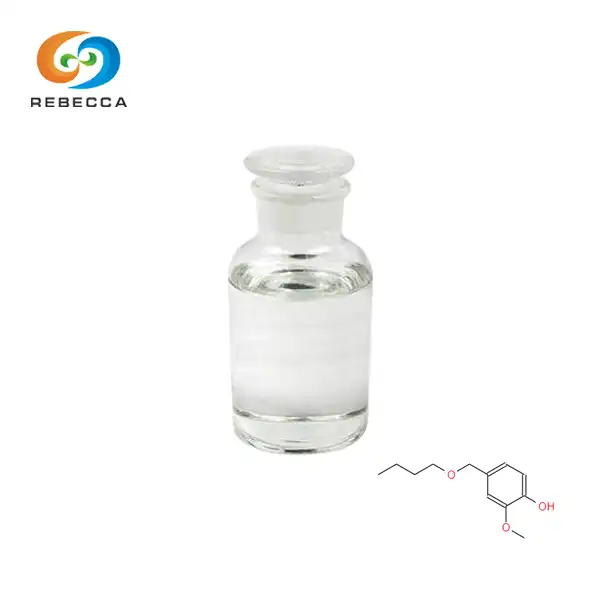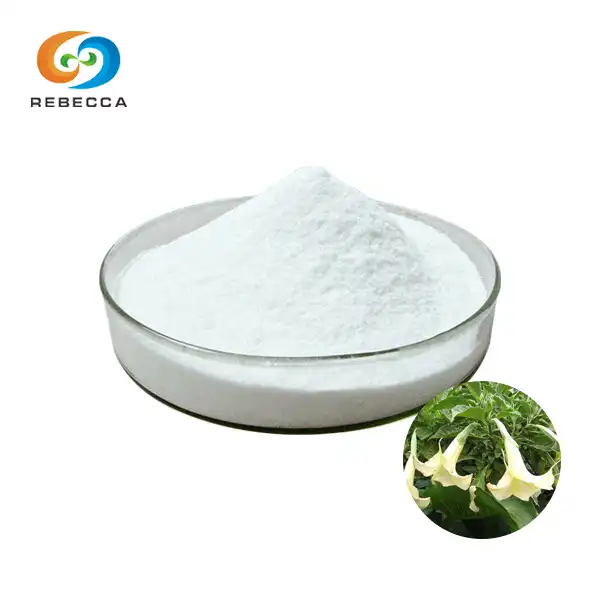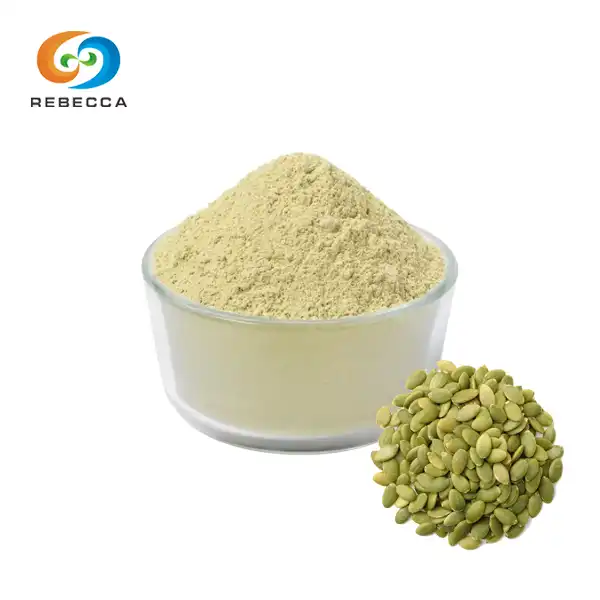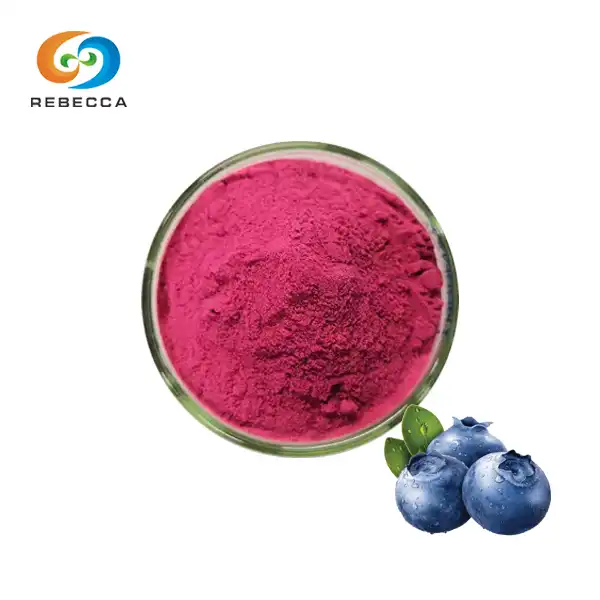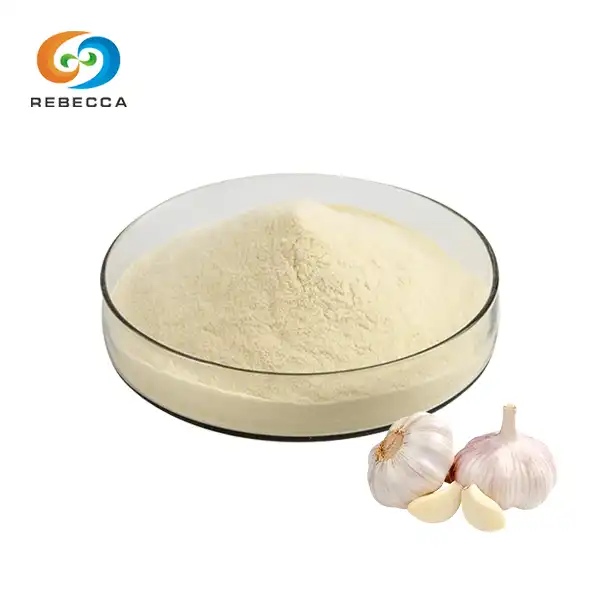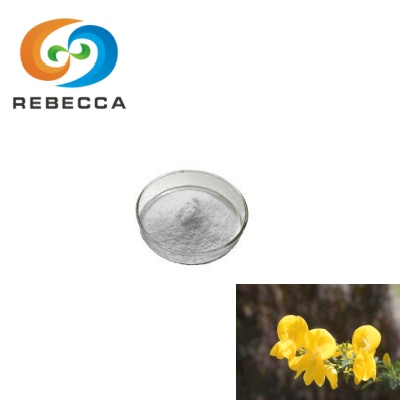Ectoine VS Ectoin
In the ever-evolving world of skincare and cosmetics, new ingredients are constantly emerging, promising to revolutionize our beauty routines. One such ingredient that has gained significant attention in recent years is ectoin powder(96702-03-3). However, you may have also come across the term "Ectoin" and wondered if there's a difference.
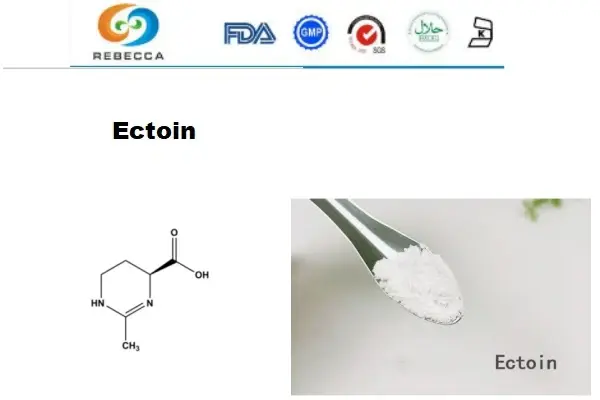
What Is The Difference Between Ectoine And Ectoin?
When researching skincare ingredients, you might have encountered both "ectoine" and "Ectoin" in product descriptions or scientific literature. The first thing to understand is that there is no actual difference between these two terms. Ectoine and Ectoin are simply different spellings of the same substance. "Ectoine" is the more commonly used and scientifically accepted name for this compound.
Ectoine, pronounced "eck-toe-een," is a natural amino acid derivative that belongs to a class of compounds known as compatible solutes or extremolytes. These molecules help certain microorganisms survive in extreme environments by protecting their cellular structures from stress factors such as heat, cold, and high salinity.
The variation in spelling likely arose from different transliterations or regional preferences. However, in scientific literature and most commercial applications, "Ectoine" is the standard term used. To avoid confusion, it's best to stick with "Ectoine" when referring to this compound in skincare or scientific contexts.
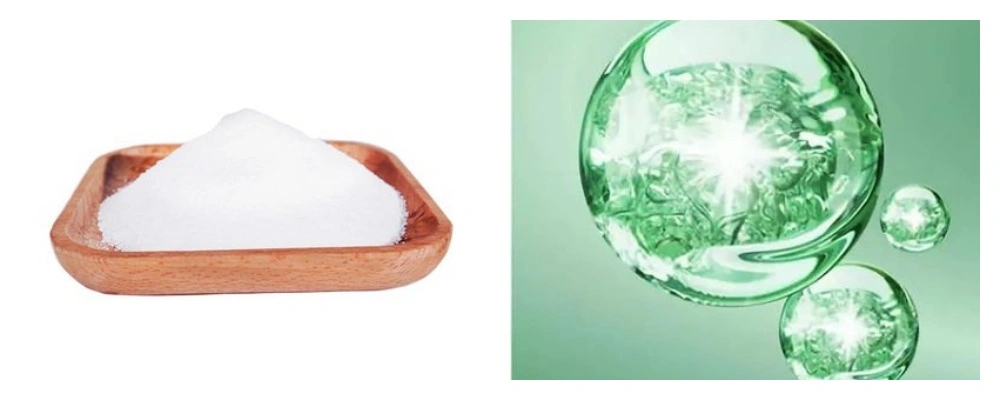
What Is The Source?
ectoin powder(96702-03-3) is primarily produced by certain microorganisms, particularly extremophiles, as a natural defense mechanism against harsh environmental conditions. These microorganisms, mainly halophilic (salt-loving) bacteria, synthesize ectoine to protect their cellular components and maintain proper cell function in extreme environments.
Some of the key microorganisms known to produce ectoin powder(96702-03-3) include:
1. Halomonas elongata: This is one of the most well-studied and commercially important Ectoine-producing bacteria. It's a halophilic organism found in salt lakes and solar salterns.
2. Marinococcus M52: Another halophilic bacterium that produces Ectoine in response to high salinity and temperature stress.
3. Brevibacterium species: Some members of this genus have been found to produce Ectoine, especially when exposed to osmotic stress.
4. Chromohalobacter salexigens: This halophilic bacterium is known for its ability to produce both ectoin powder(96702-03-3) and hydroxyectoine, a related compound with similar properties.

In nature, these microorganisms synthesize Ectoine when exposed to environmental stressors such as high salinity, extreme temperatures, or drought conditions. It acts as a molecular chaperone, helping to stabilize proteins and other cellular structures, thereby enabling the organisms to survive in these harsh conditions.
For commercial production, ectoin powder(96702-03-3) is typically obtained through bacterial fermentation processes. Scientists have developed methods to cultivate these Ectoine-producing microorganisms under controlled conditions, optimizing its yield. This biotechnological approach allows for the sustainable and large-scale production for use in various industries, including cosmetics and skincare.
What Are The Main Uses Of Ectoine?
Ectoine has gained significant popularity in recent years, particularly in the skincare and cosmetics industry. Its unique properties make it a versatile ingredient with a wide range of applications.
1. Moisturization: One of the primary uses in skincare is as a potent moisturizer. Ectoine has hygroscopic properties, meaning it can attract and retain water molecules. When applied to the skin, it forms a protective hydration shield, helping to keep the skin hydrated for extended periods. This makes it particularly beneficial for dry or dehydrated skin types.
2. Anti-aging: Ectoine has shown promise in anti-aging skincare formulations. It helps protect skin cells from environmental stressors that can accelerate the aging process, such as UV radiation and pollution. By maintaining cellular hydration and stability, Ectoine may help reduce the appearance of fine lines and wrinkles.
3. Skin barrier protection: it strengthens the skin's natural barrier function. It helps maintain the integrity of cell membranes and protects against external aggressors. This can be particularly beneficial for sensitive or compromised skin.

4. Anti-inflammatory properties: Studies have shown that ectoin powder(96702-03-3) possesses anti-inflammatory properties. It can help soothe irritated skin and may be beneficial in managing conditions such as redness, eczema, or rosacea.
5. Sun protection: While not a sunscreen itself, it can enhance the efficacy of sun protection products. It helps protect skin cells from UV-induced damage and may boost the photoprotective effects of sunscreens.
6. Hair care: Beyond skincare, it is also used in hair care products. It can help hydrate and protect hair strands, potentially reducing damage from heat styling and environmental factors.
7. Eye care: Ectoine is sometimes used in eye drops and contact lens solutions due to its moisturizing and protective properties. It can help alleviate dry eye symptoms and protect the delicate eye area.

8. Respiratory health: Some studies have explored the use of Ectoine in nasal sprays and inhalers to help manage respiratory conditions such as allergies and asthma. The compound's ability to stabilize cell membranes may help reduce inflammation in the respiratory tract.
9. Oral care: it has been incorporated into some oral care products, such as mouthwashes and toothpaste, where its moisturizing and protective properties can benefit oral tissues.
10. Pharmaceutical applications: Research is ongoing into potential pharmaceutical applications of ectoin powder(96702-03-3), including its use in treatments for dry eye disease, allergic rhinitis, and certain skin conditions.
Its versatility in these various applications stems from its unique molecular properties. As a compatible solute, it can interact with and stabilize biological structures without interfering with cellular processes. This makes it a safe and effective ingredient for a wide range of skincare and health-related products.
How Stable Is Ectoine In Skin Care Ingredients?
Ectoine's stability is one of its most valuable characteristics, making it an excellent choice for use in skincare formulations. This stability contributes to its effectiveness and reliability in various product types. Here's a closer look at its stability in skincare ingredients:
1. Temperature stability: ectoin powder(96702-03-3) demonstrates remarkable stability across a wide range of temperatures. This property is inherent to its natural function, as it helps extremophilic bacteria survive in both very hot and very cold environments. In skincare products, this means Ectoine remains stable and effective whether the product is stored in a cool bathroom cabinet or exposed to warmer temperatures.
2. pH stability: It maintains its stability across a broad pH range. This is particularly advantageous in skincare formulations, as different products may have varying pH levels to suit different skin types or treatment purposes. its pH stability ensures it remains effective in acidic, neutral, or slightly alkaline formulations.
3. Compatibility with other ingredients: it shows good compatibility with a wide range of other skincare ingredients. It can be effectively combined with various active ingredients, preservatives, and base formulations without losing its efficacy or causing unwanted interactions.
4. Photostability: Studies have shown that ectoine exhibits good photostability, meaning it remains stable when exposed to light. This is particularly important for products that may be stored in transparent containers or those designed for daytime use.

5. Long-term stability: It demonstrates excellent long-term stability in properly formulated skincare products. This means that products containing ectoine can maintain their efficacy throughout their intended shelf life when stored under appropriate conditions.
6. Stability in different formulation types: it can be effectively incorporated into various skincare formulations, including creams, lotions, serums, and gels. Its stability across different product types adds to its versatility in skincare applications.
7. Resistance to oxidation: It shows good resistance to oxidation, which is beneficial for maintaining the overall stability and effectiveness of skincare formulations.
Its stability in skincare formulations is not just a matter of maintaining its own molecular integrity. Its stabilizing properties extend to other ingredients in the formulation as well. Ectoine can help protect other sensitive components in a skincare product from degradation, potentially enhancing the overall stability and shelf life of the product.
However, it's important to note that while ectoin powder(96702-03-3) itself is highly stable, the overall stability of a skincare product depends on many factors, including the quality of other ingredients, the formulation process, packaging, and storage conditions. Cosmetic chemists and formulators must consider all these aspects to create stable, effective products that harness the full potential.
Rebecca Ectoine
Rebecca's ectoin powder boasts a purity level of 99%, which is crucial for ensuring the effectiveness and safety of the final product. High purity is especially important in skincare applications, where even small impurities can potentially cause irritation or reduce the efficacy of the formulation.
For cosmetic manufacturers and skincare brands looking to incorporate this powerful ingredient into their products, Rebecca's Ectoin offers a dependable supply chain. Their direct-from-factory model helps ensure traceability and quality control throughout the production process.
For those interested in learning more about Rebecca's Ectoin or inquiring about incorporating this high-purity ectoine into their formulations, the company provides a direct line of communication. Further information can be obtained by contacting them at information@sxrebecca.com.

References
1. Graf, R., Anzali, S., Buenger, J., Pfluecker, F., & Driller, H. (2008). The multifunctional role of ectoine as a natural cell protectant. Clinics in Dermatology, 26(4), 326-333.
2. Kunte, H. J., Lentzen, G., & Galinski, E. A. (2014). Industrial production of the cell protectant ectoine: protection mechanisms, processes, and products. Current Biotechnology, 3(1), 10-25.
3. Bownik, A., & Stępniewska, Z. (2016). Ectoine as a promising protective agent in humans and animals. Arhiv za Higijenu Rada i Toksikologiju, 67(4), 260-265.
4. Bünger, J., & Driller, H. (2004). Ectoin: An Effective Natural Substance to Prevent UVA-Induced Premature Photoaging. Skin Pharmacology and Physiology, 17(5), 232-237.
5. Buenger, J., & Driller, H. (2004). Ectoin: An effective natural substance to prevent UVA-induced premature photoaging. Skin Pharmacology and Physiology, 17(5), 232-237.
6. Dwivedi, M., Brinkkötter, M., Harishchandra, R. K., & Galla, H. J. (2014). Biophysical investigations of the structure and function of the tear fluid lipid layers and the effect of ectoine. Part B: Artificial lipid films. Biochimica et Biophysica Acta (BBA)-Biomembranes, 1838(10), 2716-2727.
